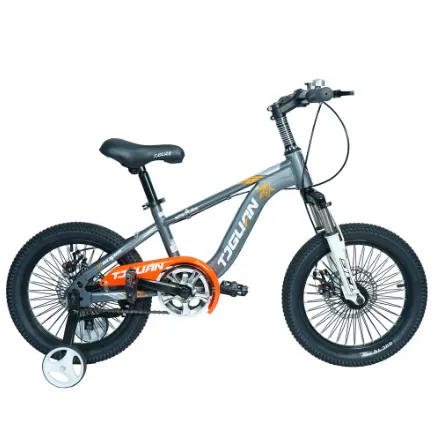Mountain Bikes: Everything You Need to Know Before You Buy
If you’re looking for adventure, fitness, or just a rugged way to get from point A to B, a mountain bike is the answer. Built to handle rough terrain, steep climbs, and unpredictable trails, mountain bikes offer durability, control, and versatility. Whether you're a first-time buyer, a seasoned rider, or sourcing inventory for your shop, the market is full of options for every skill level and budget.

In this guide, we'll explore the main types of mountain bike, what to consider before buying, how to find the right mountain bike for sale, and the best mountain bike companies in the game today.
What Is a Mountain Bike?
A mountain bike is specifically designed for off-road cycling. It features a strong frame, wide knobby tires, and advanced suspension to absorb shocks from rough terrain. Unlike road bikes, mountain bikes are built to navigate rocks, mud, tree roots, and other obstacles you’d find on trails, hills, or mountain paths.
While originally made for outdoor adventuring, mountain bikes are also popular in urban areas for their comfort, sturdiness, and all-weather capability.
Types of Mountain Bike
Understanding the different types of mountain bike is essential to choosing the right one for your riding goals. Here's a breakdown of the most common categories:
1. Cross-Country (XC) Bikes
Lightweight and built for speed and climbing efficiency.
Ideal for racing or long-distance trail rides.
Usually hardtail (front suspension only) but can also be full-suspension.
2. Trail Bikes
The most versatile and popular type.
Balanced for climbing and descending.
Often feature full suspension (front and rear) and moderate geometry.
3. Enduro/All-Mountain Bikes
Designed for aggressive trails and steep descents.
Heavier with longer suspension travel.
Great for riders who enjoy downhill segments but still need to climb.
4. Downhill Bikes
Built for high-speed descents and technical trails.
Extremely durable with powerful suspension.
Not suitable for casual or uphill riding — typically used in lift-assisted bike parks.
5. Fat Bikes
Feature extra-wide tires for snow, sand, or soft surfaces.
Stable and fun for beginners or those in extreme conditions.
6. Electric Mountain Bikes (e-MTBs)
Feature an integrated motor to assist with pedaling.
Great for riders who want longer distances or help with hills.
Available in trail, enduro, and hardtail versions.
Each type serves a different rider profile. Knowing your terrain, riding style, and experience level will help you narrow down the best match.
What to Look for in a Mountain Bike
Before shopping for a mountain bike for sale, consider these key features:
Mea Papa: Aluminum is lightweight and affordable. Carbon fiber is lighter but more expensive. Steel and titanium offer durability and a smoother ride.
Suspension: Choose between hardtail (front only) or full-suspension depending on terrain and budget.
Nui huila:
27.5" for agile, responsive handling
29" for better rollover and speed on rough terrain
Gearing: More gears offer flexibility for steep climbs and fast descents, but 1x drivetrains (single front chainring) are simpler and increasingly popular.
Brakes: Hydraulic disc brakes offer better stopping power than mechanical ones — essential for safety on descents.
Maintenance Tips
To get the most out of your mountain bike, follow basic maintenance practices:
Clean after muddy rides — especially the drivetrain.
Lubricate the chain regularly.
Check tire pressure and brakes before each ride.
Service suspension components annually.
Store indoors or under cover to protect from rust and sun damage.
Well-maintained bikes ride better, last longer, and maintain their value for resale.
Whether you're browsing for a personal upgrade or building an inventory for your store, the mountain bike market has never been more accessible. Understanding the types of mountain bike, identifying what suits your terrain and skill level, and choosing from trusted mountain bike companies will ensure you get the best value for your ride. With countless mountain bikes for sale both online and in-store, your next adventure is just one pedal stroke away.
Mountain Bike FAQs
Q1: What's the difference between hardtail and full suspension?
A: Hardtail bikes have suspension only in the front, making them lighter and more efficient for climbing. Full-suspension bikes have both front and rear shock absorption, ideal for rough, downhill, or technical trails.
Q2: What size mountain bike should I get?
A: Size depends on your height and the brand’s geometry. Always consult the manufacturer’s size chart and, if possible, test ride.
Q3: Can I use a mountain bike on the road?
A: Yes, but it may feel slower than a road or hybrid bike due to wider tires and suspension. Consider locking out the suspension for a firmer ride.
Q4: How much should I expect to spend on a good mountain bike?
A: Beginners can find solid bikes for $500–$1,000. Mid-range trail bikes range from $1,000–$3,000. High-performance models can exceed $5,000.
Q5: What are the best brands for beginners?
A: Giant, Trek, Rockrider, and Marin all offer affordable and beginner-friendly models with reliable components.
-
Baby Balance Bike OEM Service – Kids No-Pedal, LightweightNūhouNov.10,2025
-
OEM Kids Bike Children Bicycle – Cheap Wholesale BicyclesNūhouNov.10,2025
-
Kids Bike New Model 12–18 inch Boys & Girls Bike, AdjustableNūhouNov.10,2025
-
China Cheap Price Safe Kids Bike for 10yo w/ Training WheelsNūhouNov.10,2025
-
China CE-Certified Kids Balance Bike, Guaranteed QualityNūhouNov.10,2025
-
Colorful Outdoor Flashing Carton Children Scooter for KidsNūhouNov.10,2025
-
Best Price Kids Balance Bike – Superior Quality, No PedalsNūhouNov.10,2025








